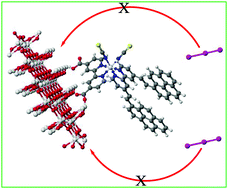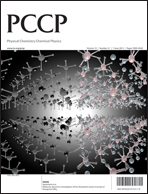Two new heteroleptic Ru(II) bipyridyl complexes MH06 and MH11 were designed, synthesized and characterized for DSSCs. While the ancillary ligand of MH06 was molecularly engineered with a strong electron donating group coupled with an extended π-conjugated system, the ancillary ligand of MH11 contained a longer π-conjugated system only. Molecular modeling, photophysical, and photovoltaic properties were compared under the same experimental conditions against the benchmark N719. In an effort to understand the structure–property relationship, their photovoltaic and photoelectrochemical properties including Jsc, Voc, ground and excited state oxidation potentials, UV-Vis absorption, and molar extinction coefficients were studied. The UV-Vis results showed intense MLCT absorption peaks of MH06 and MH11 in the visible region with a red shift of 12 and 18 nm, respectively, with significantly higher molar extinction coefficients compared to N719. Tetrabutylammonium (TBA) substituted MH11-TBA demonstrated the most efficient IPCE of over 90% in the plateau region covering the entire visible spectrum and extending into the near IR region (ca. 890 nm), which showed a solar-to-power conversion efficiency (η) of 10.06%, significantly higher than that of the benchmark N719 dye (9.32%). The superior performance in terms of the IPCE and Jsc of MH11 can be attributed to the bulky and highly hydrophobic nature of the pyrene-based ancillary ligand, which behaves as a shielding barrier for hole-transport recombination between TiO2 and the electrolyte. In addition, the IMPS results showed that the contribution of dyes to the conduction band shift of the TiO2 level is almost similar, regardless of different substitutions on the bipy-moiety. This implies that the open-circuit photovoltage (Voc) increases with reduced charge recombination in the presence of a thick layer of tetrabutyl ammonium ions (TBA) of the dye anchored on the surface of TiO2.


 Please wait while we load your content...
Please wait while we load your content...